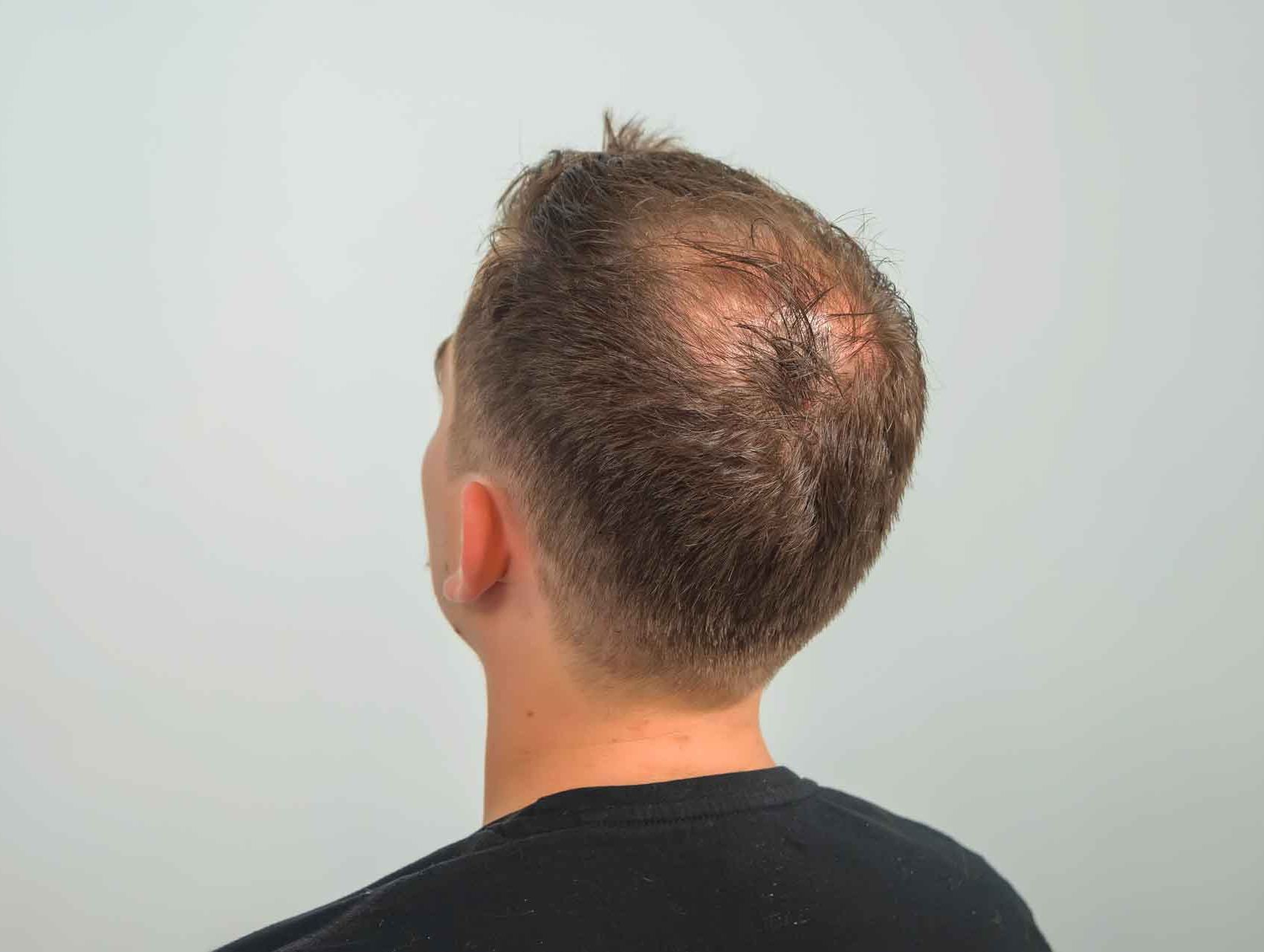
30/05/2023 0 Comments
Male Pattern Baldness: Some Of Your Questions Answered
It's been estimated that almost all men will go through some hair loss as they age. For some, it starts earlier, with men in their 20s beginning to see a thinning of their hair.
Male pattern baldness affects 35% of men aged 35 and 80% of Caucasian men before they reach the age of 70. While it's not discussed as often as it should, going bald can be very distressing for a man. It can affect their confidence and make them look and even feel older than they are. When men visit our hair loss clinic, they often have questions about baldness that they can't find the answers to anywhere else. To make this information more accessible, we have compiled the most frequently asked questions we get asked.
What is male pattern baldness?
Male pattern baldness, known as androgenetic alopecia, is a common form of hair loss affecting men. It is characterised by a specific pattern of hair thinning and loss, typically starting at the temples and crown of the head and gradually progressing over time. A combination of genetic and hormonal factors causes male pattern baldness.
The primary factor contributing to male pattern baldness is the influence of androgens, particularly dihydrotestosterone (DHT), a hormone derived from testosterone. DHT binds to androgen receptors in hair follicles, causing them to shrink and become less productive. This miniaturisation of the hair follicles leads to progressively shorter and finer hair growth until the follicles no longer produce visible hair.
The genetic component of male pattern baldness means that susceptibility to the condition is inherited. If there are close relatives, such as fathers, uncles, or grandfathers, who have experienced hair loss, the chances of developing male pattern baldness are higher. However, it is not solely dependent on the mother's side of the family, as genes from both parents contribute to the risk.
Male pattern baldness can begin as early as the teenage years or early twenties, although it often becomes more noticeable with age. The rate and extent of hair loss can vary among individuals, and some men may retain a significant amount of hair despite the condition.
While male pattern baldness is a natural and generally harmless condition, it can significantly impact a person's self-esteem and body image. Treatment options, including minoxidil and finasteride, hair transplantation procedures, and cosmetic solutions, are available to manage or restore hair growth. It is
advisable to consult with a healthcare professional or dermatologist to discuss the most suitable options based on individual circumstances.
Where does male pattern baldness come from?
Male pattern baldness, or androgenetic alopecia, has genetic and hormonal factors contributing to its development. The condition is influenced by a combination of genes inherited from both parents and the effects of androgens, particularly dihydrotestosterone (DHT).
Genetics play a significant role in male pattern baldness. The condition is believed to be polygenic, meaning that multiple genes contribute to its development. It is not solely determined by the genes inherited from the mother's side of the family, as genes from both parents contribute to the risk. The specific genes involved in male pattern baldness are not fully understood, but variations in particular genes have been associated with increased susceptibility to the condition.
Hormones, particularly DHT, also play a crucial role in male pattern baldness. DHT is a byproduct of testosterone, which is converted by an enzyme called 5-alpha-reductase. DHT binds to androgen receptors in hair follicles, particularly those in the frontal and crown areas of the scalp. This binding process leads to the miniaturisation of hair follicles, causing them to shrink and produce progressively shorter, finer hair. Eventually, the affected follicles may stop producing visible hair altogether.
The sensitivity of hair follicles to DHT varies among individuals and is determined by genetic factors. Some individuals have hair follicles that are more susceptible to the miniaturising effects of DHT, leading to earlier and more severe hair loss.
It is important to note that while genetics and hormones play a significant role in male pattern baldness, other factors such as age, overall health, and lifestyle choices can also influence the progression and severity of hair loss.
When does male pattern baldness start
Male pattern baldness can start at different ages for different individuals, but it typically begins during adulthood. The onset of male pattern baldness can occur as early as the teenage years or early twenties, although it is more commonly seen in men in their thirties or forties.
The timing and rate of hair loss can vary among individuals. Some men may experience a gradual thinning of the hair over many years, while others may notice more rapid hair loss. The pattern of hair loss also follows a distinct progression, typically starting with a receding hairline at the temples and thinning at the crown of the head. Over time, these areas may continue to expand, eventually leading to partial or complete baldness in those regions.
It is important to note that not all men will develop male pattern baldness, and the severity can vary significantly. Genetic factors, such as family history, play a role in determining when and how extensively hair loss may occur. If there are close relatives, such as fathers, uncles, or grandfathers, who have experienced male pattern baldness, it increases the likelihood of developing the condition.
If you have concerns about hair loss or suspect you may be experiencing male pattern baldness, it is advisable to consult with a healthcare professional or dermatologist. They can evaluate your situation, diagnose, and discuss potential treatment options or management strategies.
How to stop male pattern baldness?
Male pattern baldness is a natural and progressive condition, and no definitive cure exists. However, several treatments and strategies can help slow down the progression of hair loss and, in some cases, promote hair regrowth. At Ross Hair Studio & Clinic, we can assess your hair loss and suggest the appropriate hair loss treatment.
We're sure you have more questions regarding male pattern baldness and some treatment options available. Please get in touch with our hair loss clinic to discuss this issue in greater detail.

Comments
Leave a comment